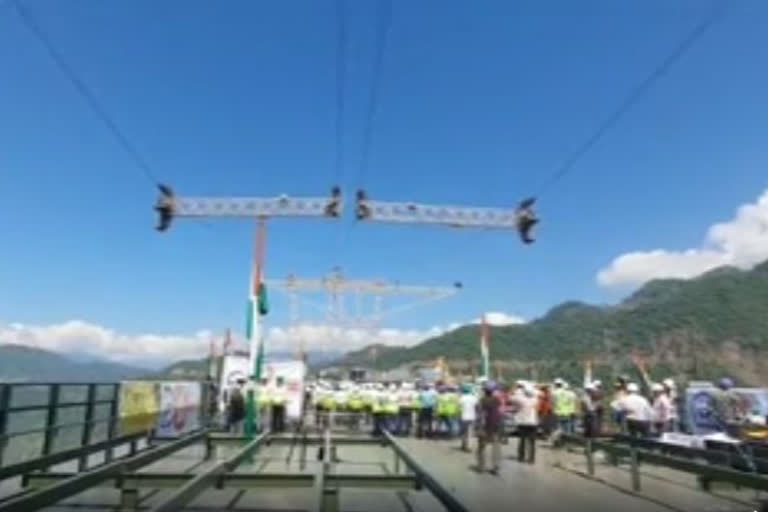Jammu: For the first time ever since independence, Srinagar got linked to the rest of India after the ‘golden joint’ on the world's highest single-arch railway bridge over Chenab River, connecting two ends of the deck, was unveiled in Jammu and Kashmir’s Reasi district on Saturday.
The unveiling of the overarch deck saw the bursting of firecrackers and people from different parts of the country singing the national anthem and chanting ‘Bharat Mata ki Jai’ on it. “This is a historic moment,” a senior official said, adding that the completion of the ‘golden joint’ has been a long journey.
The term ‘golden joint’ was coined by the civil engineers on worked on connecting the two ends of the deck of the bridge, he said. Roughly, the 1.3-km bridge, which is being constructed at a cost of Rs 1,250 crore, is 98 percent complete with the completion of the ‘golden joint’, officials said.
Also read: Those who do not love the country have no right to live, says JK LG Manoj Sinha
The bridge is located 359 m above the Chenab riverbed and is 30 m higher than the Eiffel Tower in Paris, they said. The bridge forms a crucial link in the 111-km stretch from Katra to Banihal, which is part of the Udhampur-Srinagar-Baramulla section of the Kashmir Railway project, the officials said.
For constructing the bridge, pylons were erected on either side of the river and two auxiliary self-propelled cable cranes were used to tow temporary auxiliary ropes across these pylons, according to the officials. More than 1,300 workers and 300 engineers have been working round the clock to complete the bridge, the officials said.
The construction started in 2004 but the work was stopped in 2008-09 to consider the aspect of safety of rail passengers in view of frequent high-velocity winds in the area, they said. Once completed, the bridge will be able to withstand winds with speed up to 260 kmph and will have a lifespan of 120 years.
